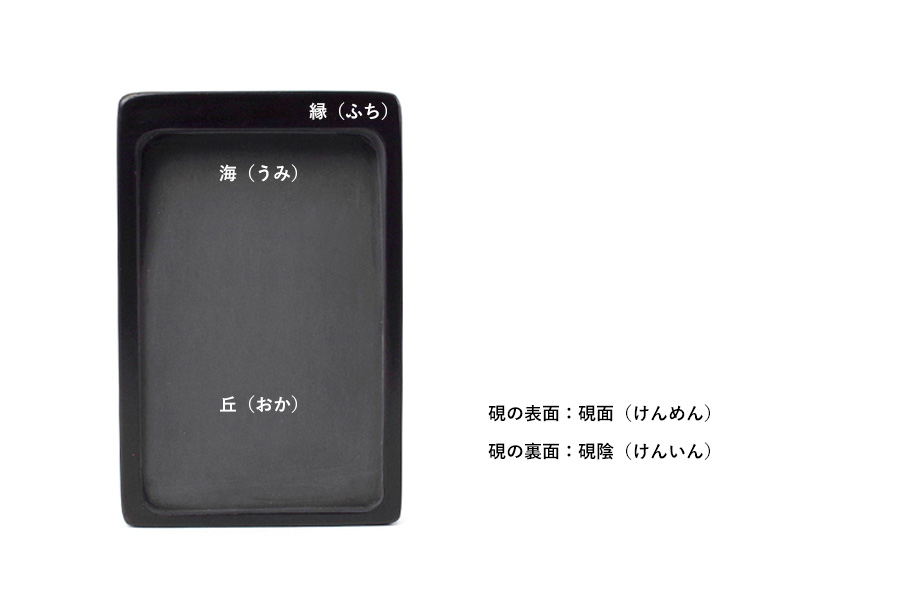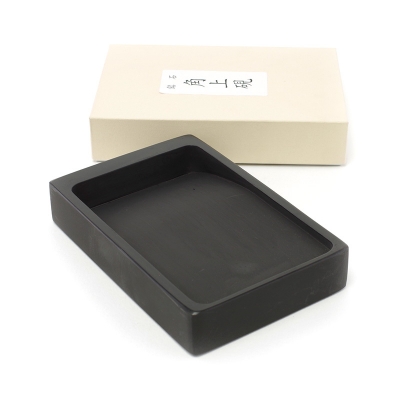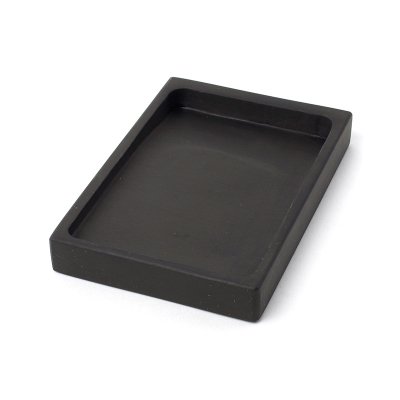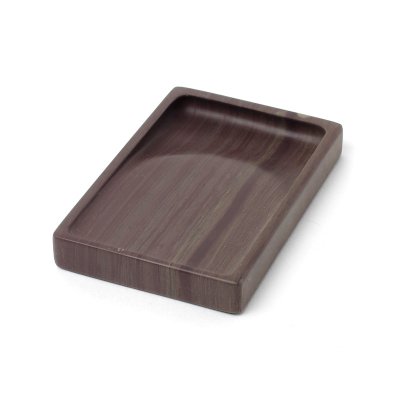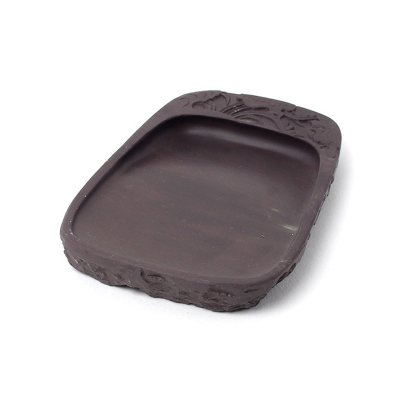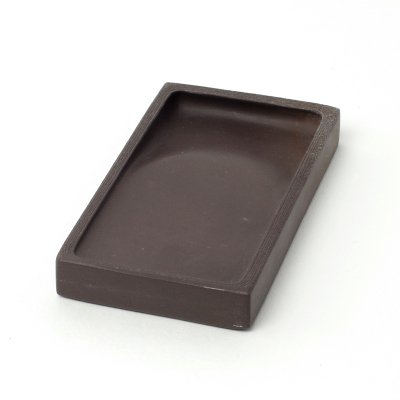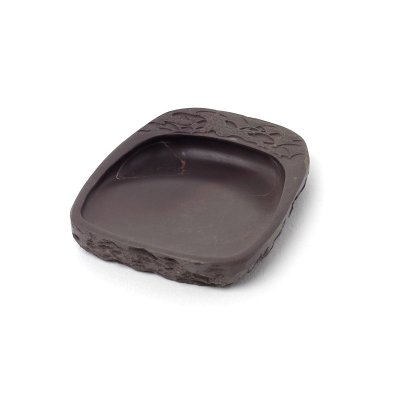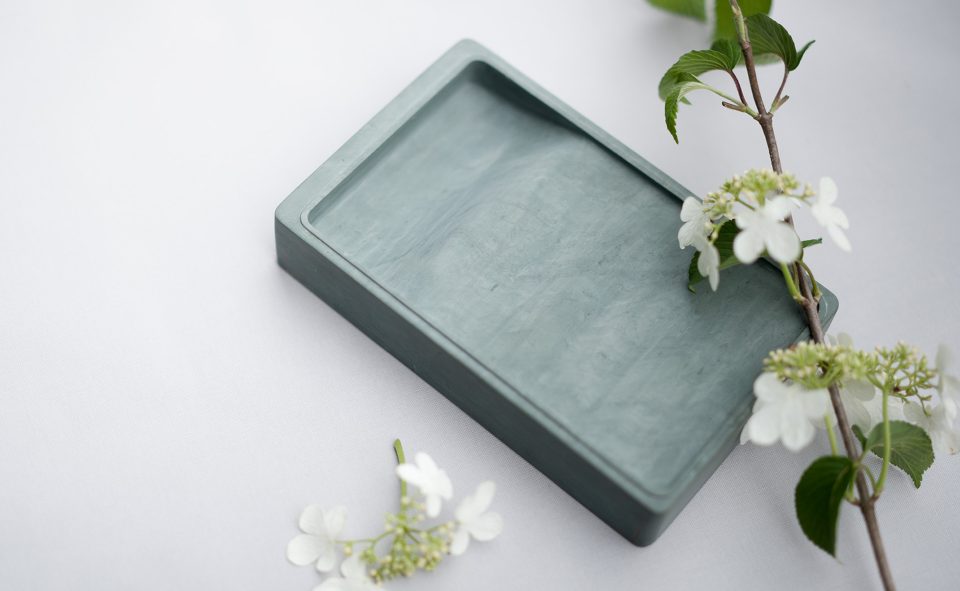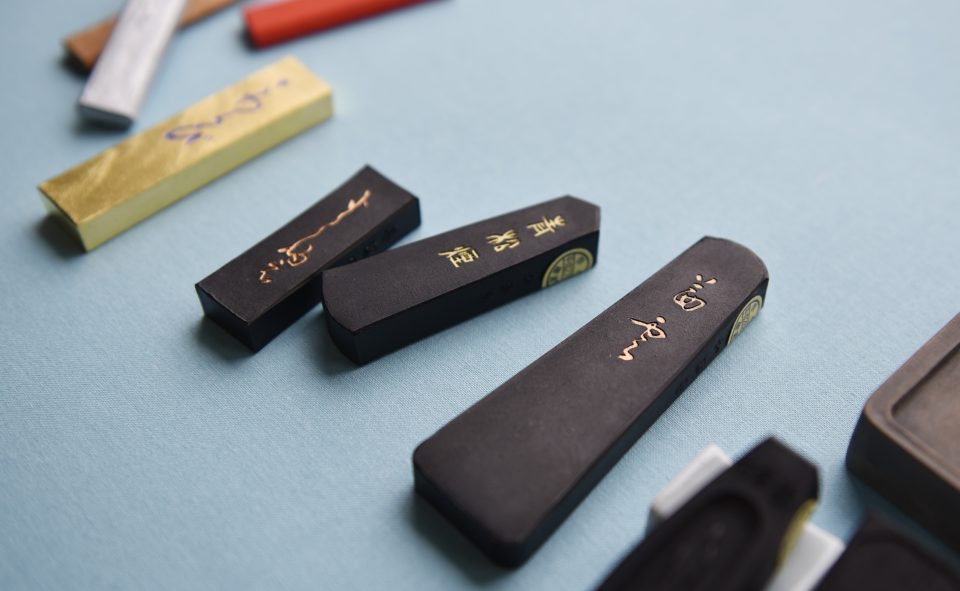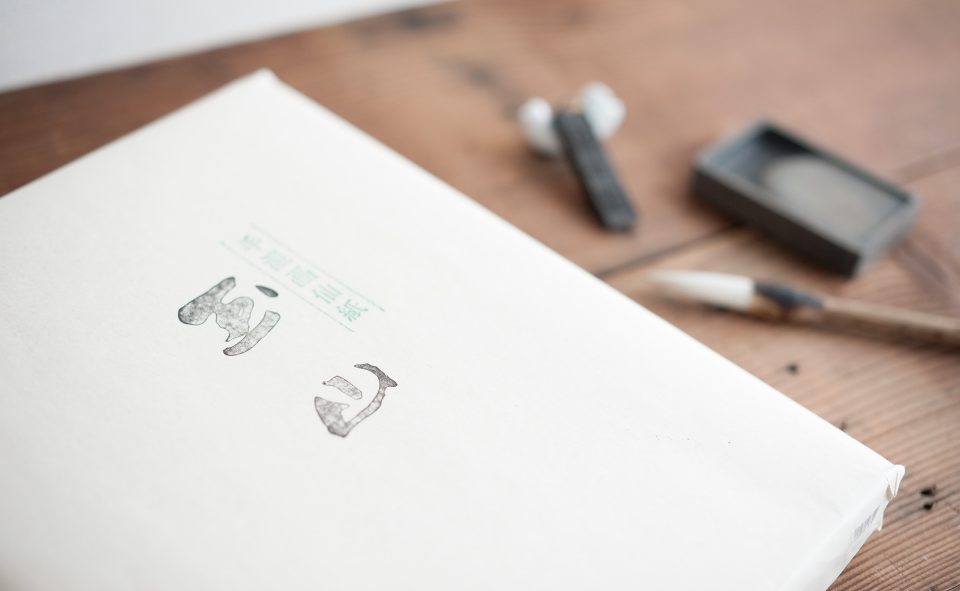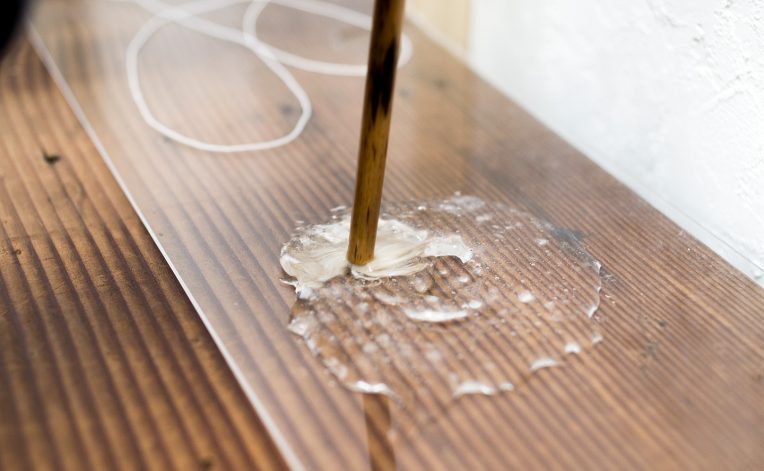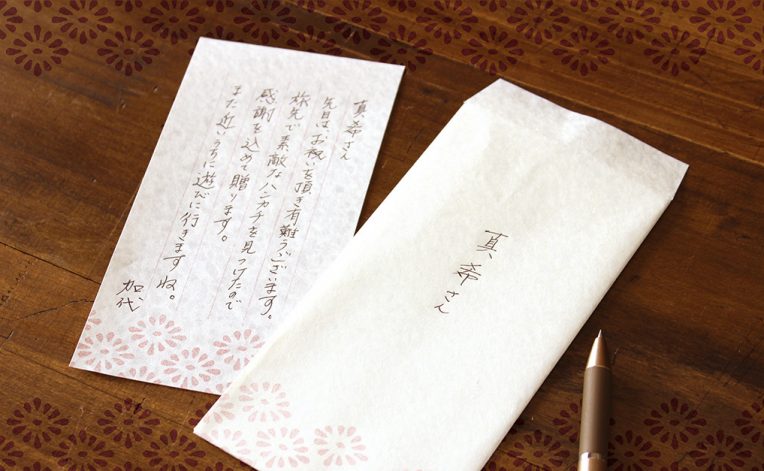記事見出し
The inkstone plays a crucial role in obtaining a good ink color. As they say, “an inkstone is a lifelong item,” so try to choose a high-quality inkstone that fits your budget. Depending on your purpose and available space, selecting the size of the inkstone can be a good approach. Additionally, different stones used in inkstones have their unique characteristics, so you may also consider choosing one based on your preferred stone type.
Inkstone Size
The unit used to indicate the size of an inkstone is in inches, where 1 inch is approximately 2.5 cm. Although there may be slight variations depending on the manufacturer, inkstones generally come in the following sizes:
3 inches: Vertical 7.5 cm × Horizontal 6.0 cm
4 inches: Vertical 10.0 cm × Horizontal 7.0 cm
5 inches: Vertical 12.5 cm × Horizontal 8.5 cm
6 inches: Vertical 15.0 cm × Horizontal 10.0 cm
7 inches: Vertical 17.5 cm × Horizontal 11.5 cm
8 inches: Vertical 20.0 cm × Horizontal 13.0 cm
9 inches: Vertical 22.5 cm × Horizontal 14.5 cm
10 inches: Vertical 25.0 cm × Horizontal 16.5 cm
Additionally, in the world of Japanese inkstones, there are traditional expressions used to indicate their sizes, such as “Shigohira” (四五平) or “Gosanzun” (五三寸).
“Nigotabi” (二五度) – 7.5cm (height) x 4.5cm (width)
“Sango-tabi” (三五度) – 10.5cm (height) x 4.5cm (width)
“Shinisu” (四二寸) – 12.0cm (height) x 6.0cm (width)
“Shigohira” (四五平) – 13.5cm (height) x 7.5cm (width)
“Gosanzun” (五三寸) – 15.0cm (height) x 9.0cm (width)
“Koshirouku” (小四六) – 16.5cm (height) x 10.5cm (width)
“Seishirouku” (正四六) – 18.0cm (height) x 12.0cm (width)
“Ooshirouku” (大四六) – 19.5cm (height) x 13.5cm (width)
Names of Different Parts of the Inkstone
The surface of the inkstone is referred to as the “Kenmen” (硯面), and the backside is called the “Ken’in” (硯陰).
Choosing an Inkstone
Selecting by Size
For kana or practical writing: 3 sun to 5 sun (approx. 7.5cm to 12.5cm) For kanji on hanshi or kana strip: 6 sun to 7 sun (approx. 15.0cm to 17.5cm) For kanji with wider lines: 8 sun to 10 sun (approx. 20.0cm to 25.0cm) (* If you often carry it for practice, having a separate inkstone for portable use can be convenient. Please note that the above sizes are rough guidelines.)
Choosing based on Stone Characteristics
Inkstones are named according to their place of origin. Each stone has different colors and characteristics, so be sure to find an inkstone that suits your preferences.
■雄勝硯(Ogatsu Suzuri)
Ogatsu Suzuri is a representative type of inkstone made in Miyagi Prefecture, which is a well-known production area for traditional Japanese inkstones.
Made from black, hard, and compact slate, it possesses excellent luster and uniformity of particles. Its unique characteristics include being pure black, strong against compression and bending, low water absorption rate, and resistance to chemical reactions and long-term deterioration.
Due to the devastating impact of the Great East Japan Earthquake on March 11, 2011, the representative production areas of traditional Japanese inkstones were severely affected. As a result, the stone is currently sourced from Anhui Province and then processed and shipped from areas including Sendai City, Ishinomaki City, and Ogatsu Town in Miyagi Prefecture.
Currently, Ogatsu Suzuri is referred to as “Ogatsu Kakou Suzuri” and sold under this name.
■細羅紋硯(Sairamonken)
An affordable inkstone that grinds ink well.
This inkstone is sourced from the Longwei Mountain area in Jiangxi Province, China, and along the Furong River. It is made by vertically splitting the thin-layered rock material and finishing it into an inkstone, characterized by fine and delicate cross-grain patterns (Sairamon, 羅紋). Due to its affordability and excellent ink-grinding properties, it is highly recommended for beginners.
■宋坑端渓硯(Songkeng Duanxi)
An appealing choice for beginners due to its affordable price.
This inkstone is sourced from the Axe Ke Mountain area in Gaoyao County, Zhaoqing City, Guangdong Province, China. Among the Duanxi inkstones, it is known for its most reasonable price. It features a brownish stone color, and the stone material is relatively hard, allowing for quick ink grinding. However, be cautious of inkstones with a very shiny surface or a strong reddish hue, as they often indicate an extremely hard stone material, requiring special attention.
■新麻子坑端渓硯(Shinmashikou Duanxi)
Beautiful deep purple stone color with exquisite stone patterns.
One of the three famous mines, Shinmashikou, is sourced from the Axe Ke Mountain area in Gaoyao County, Guangdong Province, China. It is renowned for its beautiful luster and deep purple stone color, which makes its stone patterns highly desirable. The variety of patterns is second only to Laozi inkstones, and it excels in ink grinding as well. The stone’s fine texture and patterns are remarkable features.
Please note that the stone does not have a very strong hardness, so it is essential to take care of the inkstone regularly.
■坑仔巌端渓硯(Koushigan Duanxi)
A stone material with excellent fine texture that grinds ink well.
Sourced from the Axe Ke Mountain area in Gaoyao County, Guangdong Province, China, this inkstone is located on the southern slope of Lao Keng, which is why it bears a strong resemblance to the Lao Keng Duanxi inkstone. Although it tends to be relatively smaller in size, it boasts an ink-absorbing stone material with a remarkably fine texture, and some inkstones exhibit a stone pattern called “Gan” (眼). The stone color is mainly reddish-purple, and compared to the Lao Keng Duanxi inkstone, it produces a sound similar to metal due to the drier nature of the stone.
■老坑端渓(Lao Keng Duanxi)
The Finest Grade of Duanxi Inkstone
Sourced from the Axe Ke Mountain area in Gaoyao County, Guangdong Province, China, this inkstone is considered the finest grade among Duanxi inkstones. Some of these inkstones can be quite expensive, reaching tens of thousands of yen, and many of them exhibit a pale purple color. They are excellent for grinding ink, providing a smooth and fluid sensation as the ink dissolves while grinding.
When wet with water, some inkstones reveal various patterns. Although historically known as the top-quality Duanxi inkstone, the mining of this stone has now been discontinued, making it difficult to obtain larger ones.
Choosing Based on Appearance
Inkstones come in various colors, shapes, and carvings, and no two high-quality inkstones are exactly alike. Some people may be torn between choosing an oval-shaped or square-shaped one, but it’s entirely up to your personal preference. The choice of carvings is also subjective; some may prefer inkstones with carvings, while others may prefer plain ones. There is no right or wrong choice – simply pick what you like.
Choosing Based on ‘Houbou’ (鋒鋩)
The countless fine irregularities on the inkstone’s surface are referred to as “Houbou” (鋒鋩), and they play an essential role as the “file” in grinding ink. A good-quality inkstone is characterized by fine and smooth Houbou, allowing for easy grinding of high-quality ink.
Please note that Houbou is not permanent. If it wears down and makes ink grinding difficult, you will need to use a dedicated whetstone to re-sharpen the Houbou. Also, nowadays, many inkstones are cosmetically enhanced for display purposes, making it challenging to judge the actual Houbou just by touching them. When using an inkstone with cosmetic enhancements for the first time, sharpening it with a whetstone can significantly improve its ink-grinding performance.
Choosing Based on Weight
When uncertain about which inkstone to purchase, go for the heavier one. The weight can serve as a reference for judging the tightness of the inkstone’s pores, which is not easily discernible by appearance alone.
Conclusion
Grinding excellent ink with a top-quality inkstone is the ultimate luxury. By cherishing your choice of inkstone, you can grind ink effortlessly and produce deep and rich ink. At Shogu Online, we offer a wide range of inkstones in different sizes, types, and price ranges. Find your favorite inkstone here.
関連記事
Related Article List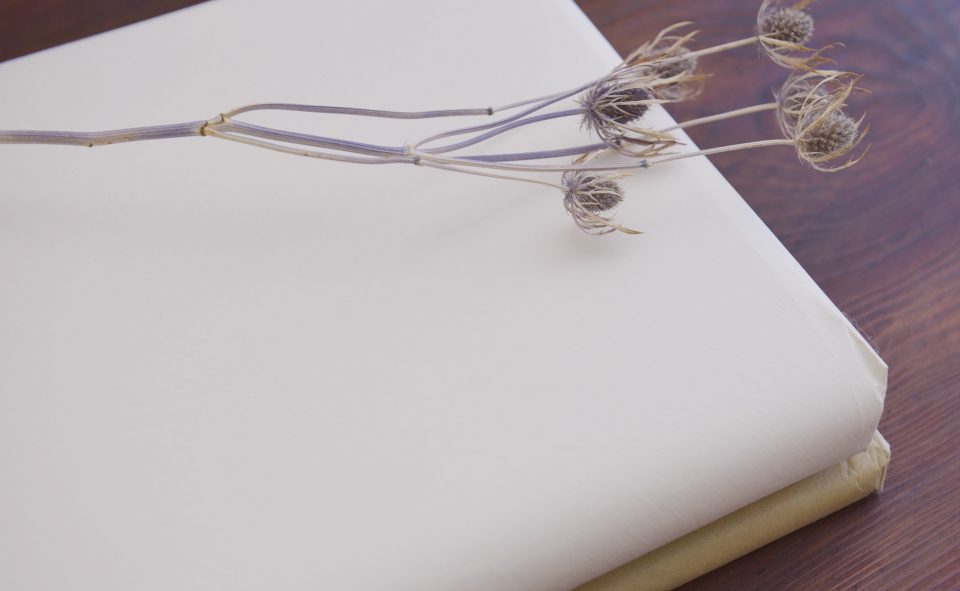
Proper Storage and “Laying” of Calligraphy Paper
Calligraphy paper plays a crucial role among the Four Treas...続きを読む»
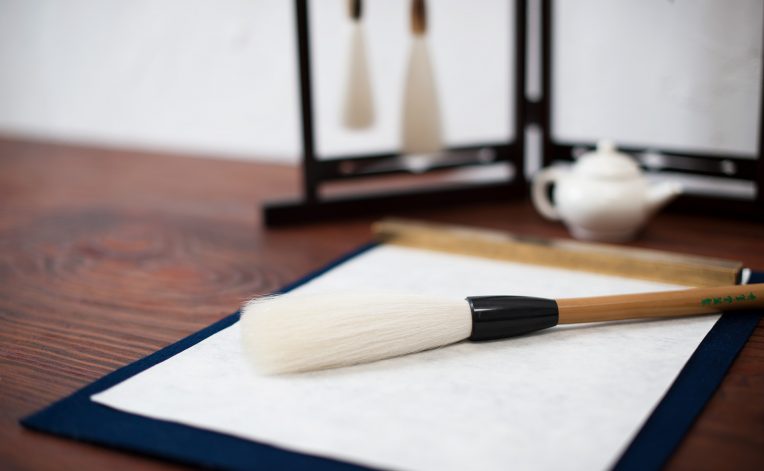
I Want to Try It – About Premium Wool Brushes
What is a Premium Wool Brush? A wool brush, also known as a...続きを読む»
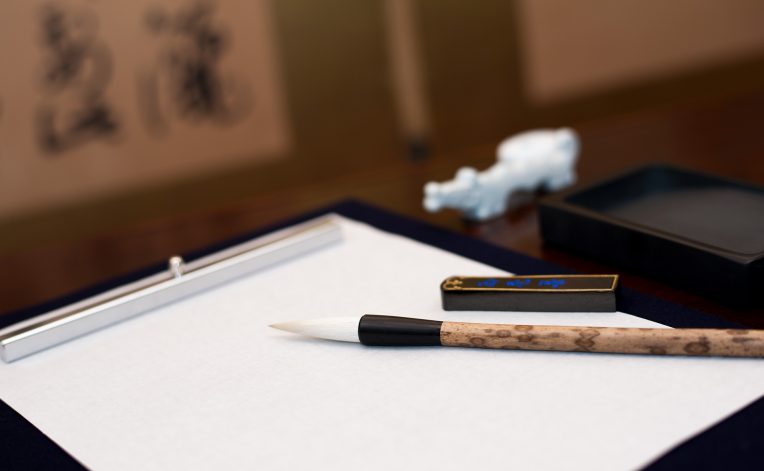
Introduction to Calligraphy Sets for Adults Starting Now
Recommended Calligraphy Sets for Adults January is a month ...続きを読む»

